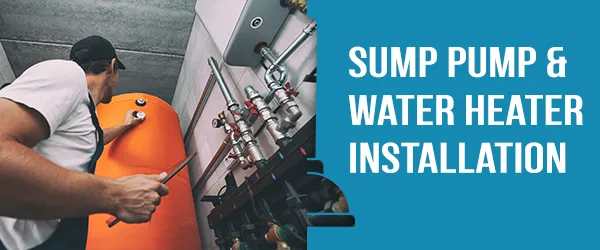Plunger Plumber – The Right Way to Use a Plunger
by siteadmin

A flange plunger is the best for toilets because it has an extra flap of rubber that sits well over the drain opening. This creates the suction needed to dislodge a stubborn clog.
A plunger works by the power of suction and pressure. By sealing the rubber cup of a plunger over the drain opening and pushing it down, this increases the pressure in your pipes.
Maintenance
If your drains are getting slow, it’s likely time for some maintenance. This can help you avoid costly repairs and keep your home running smoothly. At Plunger Plumber, we offer a variety of maintenance services. From clog removal to hydro jetting, our technicians can get the job done.
We all know that a plunger can unclog a toilet, but did you know that it’s also the correct tool for many other clogged drains in your home? The sink, tub and shower often show similar signs of a clog as the toilet. The good news is that plunging will almost always work to clear these clogs.
When using a plunger, it’s important to use the right technique. Make sure the rubber bell is completely submerged in the standing water, and that the handle is pushed down on the flange. After doing this, continue to push down with quick thrusts for 20 seconds. Be careful not to lift the handle too high, or you’ll break the seal.
While this is a great first line of defense, it’s always best to call a professional plumber for the most difficult and stubborn clogs. They have access to tools that can help with more difficult blockages, as well as the knowledge and experience to diagnose the issue correctly.
Plunger Plumber has been providing expert plumbing services for over 14 years as one of the top plumbers Cleveland Ohio residents can rely on. We pride ourselves on delivering superior workmanship and down-to-earth customer service.
Clogged drains are an inconvenient, expensive problem that can be prevented with proper maintenance and preventive measures. Regularly clearing your drains with a plunger can ensure that your pipes are free of debris and clogs, while also keeping them properly lubricated for smoother flow. We can also perform comprehensive plumbing inspections to identify any potential problems and make recommendations to resolve them before they become bigger issues. Contact us today to schedule a plumbing inspection!
Repair
Most people have a plunger in their home to deal with clogged toilets, and it is often the first DIY tool to come to mind when trying to tackle a sewage problem. However, it is important to remember that there is a right way and a wrong way to use a plunger. For example, if you plunge a drain with the incorrect technique, you may cause damage that requires professional repair services.
Plungers are used to clear blockages in sinks, tubs, showers, and toilet traps, as well as in sewer lines. The basic design of a plunger consists of a rubber suction cup attached to a handle, and it works like a force pump to free clogged pipes. It is also known by other names, such as a force cup or plumber’s friend.
When used correctly, plunging can be an efficient way to unclog a drain. The key is to seal the plunger over the drain and then push down, which increases pressure and moves clogs downward. When you pull up on the handle, it creates a suction that pulls water and clogs out of the drain. This is why it’s so important to use a clean plunger.
While plunging can be an effective DIY solution for some clogged drains, it’s not recommended to try it on stubborn or deep clogs. These types of clogs can be caused by toys, hardened soap, or other solids that cannot be broken down by the plunger’s action. In these cases, it’s better to call a plumber.
Plumbing issues can be frustrating, but a little DIY know-how can save you time and money. By following these simple tips, you can keep your home’s plumbing in good condition.
Replacement
Having the right plunger on hand can make drain clogs so much easier to deal with. There are many different types of plungers and each one is designed for specific tasks. You also need to know how to use a plunger correctly to get the most out of this simple tool. Whether you are dealing with a toilet clog or another type of drain clog, the best way to get the job done is by making sure the plunger can form a tight seal over the drain.
Most people have a standard cup plunger, which is what most think of when they hear the word “plunger.” This type of plunger has a rubber cup on a handle that is usually made out of wood. This plunger is great for unclogging sinks, tubs, and showers. When using it to unclog a toilet, it is important to cover the overflow drain, if there is one, with a towel to prevent air from escaping and diminishing the plunger’s suction power.
While the basic cup plunger can be used to clear most clogs, some clogs will require something more powerful. A flange plunger, which has a circular rubber flange in the middle of the rubber cap, is better suited for toilet clogs. This plunger is not ideal for other types of drains because it is hard to create a seal with the cup and it can create a lot of force.
A taze plunger, which has a disc sized to fit a particular pipe size and a long rod that pushes it into the pipe, is a good choice for clearing large pipes but not typical household drain clogs. It requires a lot of skill to use and can be difficult to master.
Some clogs are too stubborn for a plunger, especially if they involve a blocked S-trap or P-trap, which are serpentine sections of the drain that keep odourous sewer gas from escaping into the home. These clogs are often caused by grease, minerals, and cleaning products that have built up in the pipes. If a plunger isn’t able to dislodge these clogs, a plumber may be needed to use a plumbing auger.
Installation
A Plunger Plumber is one of the most useful tools in any household. It can help you with many basic problems, including drain clogs. However, using it correctly is important. There are some common mistakes that people make when using a plunger, and these can lead to a lack of success or even damage to your drains.
First, make sure the plunger is clean and dry. Then, place some petroleum jelly on the lip of the plunger to create a more effective seal. This will also help the plunger last longer. If you’re using a rubber plunger, the jelly will also protect it from cracking or becoming brittle.
There are different types of plungers, and each has its own unique qualities. The flange plunger, which has a curved surface that fits the drain opening, is a good choice for toilets and bathtubs. It’s not as versatile as the cup plunger, but it can still handle most drain clogs.
The accordion plunger is similar to the flange plunger, but it’s a bit more versatile. It’s better suited for kitchen sinks and showers, but it can still handle toilets and bathtubs. The smaller cup on this plunger makes it less able to create a seal than the larger cup on the flange plunger, but it can still be used for most drain clogs.
You should always remove any standing water from the sink before you begin using the plunger. This will make it easier to build up enough force to break down the clog. It’s also important to use quick thrusts instead of dragging the plunger back and forth. This will prevent air from getting trapped in the cup and interfering with the seal.
If you’re still having trouble with a stubborn drain clog, it might be time to call in the professionals. In some cases, a plunger may not be enough to break down the clog and it might need to be removed with a professional tool called a drain snake. A drain snake is a long, flexible metal cable with a corkscrew-shaped end that can be fed down the pipes and cut through or push down a clog.
A flange plunger is the best for toilets because it has an extra flap of rubber that sits well over the drain opening. This creates the suction needed to dislodge a stubborn clog. A plunger works by the power of suction and pressure. By sealing the rubber cup of a plunger over the drain opening…
Recent Posts
- Prime Cut Lawn & Landscaping Unveils Innovative Solutions Transforming Kentucky Landscaping
- How to Build Retaining Walls
- Interior Painters Naperville, IL: Transforming Your Home with Color
- Plunger Plumber – The Right Way to Use a Plunger
- Comfort Pro’s Heat and Air Provides Heating and Air Conditioning Services in Yakima
